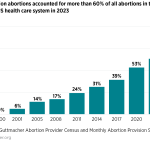
Barriers in Reproductive Health Choices Among Indian Men: A Closer Look
The latest data emerging from the United Nations Population Fund (UNFPA) and YouGov has sparked an important conversation about the reproductive rights of Indian men. While traditional debates have mainly focused on women, the new figures point out that 61 percent of Indian men face limitations in making personal reproductive choices—just a hair’s breadth more than the 60 percent reported by women. This opinion piece aims to examine these issues, exploring the tricky parts of limited contraceptive options, family pressures stemming from the joint family system, and the overall cultural and policy gaps that leave both genders with complicated pieces to manage. In doing so, we hope to offer a balanced perspective on a subject that affects countless lives.
It is crucial to understand that reproductive health is not solely a women’s issue. With barriers that include limited contraceptive choices, social pressure, and even experiences of sexual coercion, Indian men are often caught in a tangle of personal desires and family expectations. The data reveals that 34 percent of men have felt unable to use the contraceptive method of their choice—compared to 27 percent of women—a gap that highlights hidden inequalities in how reproductive risks and responsibilities are shared. This article digs into these subjects, examining the fine points and subtle parts of the challenges that shape reproductive agency today.
Limited Contraceptive Choices and Their Impact on Reproductive Freedom
One of the most glaring issues Indian men face is the lack of diverse contraceptive options. While women have access to an array of methods — including pills, intrauterine devices, and hormonal implants — men are primarily offered just condoms and vasectomy. These two methods, despite being widely available, come with their own limitations and failure rates.
A closer look at this subject reveals several concerns:
- Limited options lead to second-guessing and feelings of frustration.
- The available male contraceptives do not offer the same level of convenience or efficacy as some female alternatives.
- Medical research has yet to launch male contraceptive pills, long-acting reversible gels, or injectables on the market, leaving a gap in the makeup of reproductive health resources.
Without more choices, men are left in stressful situations where personal preferences drift into the territory of feeling overwhelmed by the choices they simply do not have. This limitation forces many to rely solely on traditional methods that may not always be sustainable or ideal, and the overall system ends up being off-putting for those who wish to play an equal role in family planning.
Data Snapshot: Contraceptive Limitations
The UNFPA report shares that:
| Contraceptive Choice Issue | Men | Women |
|---|---|---|
| Unable to use preferred method | 34% | 27% |
| General reproductive agency limitations | 61% | 60% |
This table illustrates the clear gap which needs addressing. More innovative and diversified male contraceptive methods could not only alleviate the pressure but also lead to more balanced reproductive responsibility.
Family Pressure and the Role of the Joint Family System
In India, where joint family systems continue to play a significant role, both men and women feel the weight of family expectations on their reproductive decisions. Often, the goal of pressing for heirs and upholding familial traditions can turn reproductive choices into contentious and, at times, intimidating negotiations.
Many young men report being caught in the middle of their personal desires, their partner’s wishes, and the expectations imposed by older generations. This creates a situation that is full of problems, where finding your way through the subtle parts of family dynamics can feel nerve-racking.
Understanding the Joint Family Impact
The joint family system, with its tangled issues and hidden challenges, influences reproductive choices in several distinct ways:
- Multiple Stakeholders: In a joint family scenario, decisions are rarely confined to just the couple. Elders may impose their opinions, leaving little room for the couple’s own aspirations.
- Heirship Expectations: The pressure to continue the family line means that men often face intense pressure to have children even when neither partner may be ready or willing.
- Communication Barriers: Open dialogue about the nitty-gritty of reproductive health can be stifled by traditional values, leaving men and women alike without the space to voice concerns openly.
For instance, the survey indicates that 30 percent of Indian men felt pressured to have a baby or keep a pregnancy, while 26 percent of women experienced similar coercion. This discrepancy even extends to issues like sexual coercion, where 34 percent of men reported instances of being unable to refuse unwanted intercourse. Such findings challenge the stereotype that only women face significant reproductive pressure and confirm that the whole family dynamic needs a relook.
Cultural Factors and the Need for Inclusive Policy Reform
The data clearly shows that cultural and policy-related issues are intertwined. Reproductive rights have long been managed under a framework that largely views women as the focal point for family planning. This embedded notion results in policies that are not only off-putting for men but also exacerbate gender disparities in reproductive responsibility.
The UNFPA report asserts that policymaking around contraceptives has been heavily influenced by traditional gender roles, placing undue expectation on women while leaving men marginalized. For true change to take place, it is essential to create policies that accommodate the specific needs of both genders. This means researching and eventually commercializing male contraceptives, as well as establishing educational campaigns that break down stereotypes around male reproductive health.
Long-Term Policy Recommendations
Based on recent findings and expert opinions, several key recommendations can help build a fairer, more inclusive framework:
- Research and Development: Boost funding for clinical trials dedicated to male contraceptive methods. This could eventually lead to methods that offer more flexibility and reliability than current options.
- Public Awareness Campaigns: Educate the public on the role of men in reproductive health, ensuring that the conversation moves beyond a solely female-centric approach.
- Family Counseling Services: Establish community centers that support couples and their extended families in sorting out reproductive decisions, allowing everyone to voice their personal desires and concerns.
- Inclusive Healthcare Policies: Design healthcare initiatives that incorporate the needs of both sexes, thus dismantling traditional gender barriers in accessing reproductive services.
Through these measures, a shift in cultural perceptions can be initiated, making it easier for men to figure a path through previously intimidating territory. Not only will this benefit individuals directly, but it also has the potential to create a ripple effect that inspires broader social change.
Sexual Coercion: A Hidden Problem with Unnoticed Repercussions
Another disturbing revelation from the UNFPA report is the significant rate of sexual coercion experienced by men. Approximately 34 percent of Indian men stated they were unable to truly refuse unwanted sexual advances, a rate only one percentage point higher than that reported by women. This finding shatters many preconceived notions that men are immune to such pressures and indicates that sexual coercion is a problem loaded with issues for everyone involved.
Addressing this problem requires that we take a closer look at what sexual coercion really entails, and the subtle parts of personal autonomy that it disrupts. The traditional belief that men always desire sex is not only misleading but also dangerous, as it often minimizes the reported experiences of men who are affected by coercion.
Breaking Down the Problem
There are several key points to understand about this challenge:
- Social Stereotypes: Stereotypical views about male sexuality often prevent men from recognizing or reporting coercive experiences.
- Communication Hurdles: In many cases, the lack of a safe space to talk about these issues makes confronting the problem even more overwhelming.
- Support Networks: Few dedicated services exist for men who face sexual pressure, leaving them with limited options for recourse.
It is clear that sexual coercion is not just a women’s problem. We need campaigns and educational programs that target everyone, ensuring that both men and women have the support they require to say no when necessary. By piecing together these fine shades of reality, society can work towards creating an environment where all experiences of coercion are taken seriously.
Overcoming Traditional Gender Roles: Towards a Fairer Future
For too long, the responsibilities and challenges of reproductive health and family planning have been feminized. In many communities, household decisions regarding the number of children and the methods used for preventing unwanted pregnancies are still seen as women’s business. This outdated perspective is not just unfair—it is counterproductive, as it ignores the potential for men to contribute more actively.
For a truly balanced approach, it is essential to acknowledge that both genders face equally tricky parts and tangled issues in the realm of reproductive choices. While current statistics show that 61 percent of Indian men report experiencing limitations in their reproductive decision-making, it is clear that traditional gender roles play a significant role in producing these results. Many husbands continue to be the nominal decision-makers, yet a significant chunk of the responsibility, as well as social stigmas, falls on women. The need for an equitable distribution of responsibility is both critical and super important for the progress of society.
Steps to Encourage Greater Male Involvement
There are several strategies that can help break down these entrenched roles:
- Educational Initiatives: Schools and community centers should include robust sexual and reproductive health education that addresses the responsibilities of both sexes.
- Couples Counseling: Encouraging partners to attend counseling sessions can help them work through small distinctions in reproductive decision-making and align their expectations.
- Media Representation: Positive representations of male involvement in family planning in media and popular culture can pave the way for changing societal norms.
- Policy Incentives: Government incentives for shared reproductive responsibilities can serve as a catalyst for cultural change.
Such measures could empower both men and women to steer through the maze of family planning with confidence and collaborate more effectively on decisions that affect their personal lives and the future of their families.
Addressing the Underlying Tensions: A Call for Societal Change
The current situation, characterized by contradictory pressures—from the lack of male-specific contraceptives to overwhelming family expectations—indicates a system that is riddled with tension. For men in India, the issues are not just about the availability of methods or even consent; they are about the cumulative effect of many intimidating layers of cultural inertia and outdated policy frameworks.
When men report a 61 percent rate of reproductive decision limitations, it reflects not just personal struggles but also a larger social problem. It highlights the need to step back and reexamine how our institutions, both familial and governmental, handle the topic of reproductive rights. The disturbing reality of men being unable to fully exercise choice due to layers of pressure calls for a collective effort from all sectors of society.
Creating a Supportive Framework
A multi-pronged strategy can help to address these layered challenges:
- Community Dialogues: Initiatives that encourage open discussions about reproductive rights in community hubs can help clear up misunderstandings and provide practical advice.
- Government Action: Policymakers must recognize and address the off-putting gender gaps by funding research specifically aimed at diversifying contraceptive methods for men.
- Healthcare Provider Training: Medical practitioners should receive training to handle sensitive issues in reproductive health without bias, ensuring that both men and women receive empathetic support.
- Intersectional Research: Studies that take into account the small distinctions in how different regions and communities experience these challenges can inform more effective, localized solutions.
This multi-dimensional approach will ensure that the system does more than merely treat the symptoms. Instead, it will begin to address the underlying causes of the tangled issues that both men and women face in matters of reproductive autonomy.
Personal Stories and the Human Side of Reproductive Pressure
Behind every statistic lies a personal story—stories of individuals caught in an overwhelming struggle to assert personal agency in the face of persistent family pressure and limited choices. The survey reports do not just offer numbers; they shine a light on many lives where traditional expectations clash with personal desires.
For many Indian men, the experience of being unable to say no to sexual advances or being forced into continuing a pregnancy despite personal reservations is more than an abstract statistic—it’s a lived reality. These experiences, often hidden away due to fear of social judgment or embarrassment, reveal the nerve-racking side of a system that fails to genuinely empower its members.
By listening to and sharing these personal narratives, society can start to grasp the fine shades of hardship that many go through. This, in turn, can pave the way for empathetic reforms that address not only the policy gaps but also the subtle parts of cultural conditioning that make it difficult for men—and women—to reclaim their reproductive autonomy.
Examples of Reproductive Pressure in Daily Life
Some common scenarios include:
- Family Gatherings: During social events, discussions about marriage and children can quickly turn into debates where a young man feels overwhelmed by the expectation to produce heirs.
- Medical Appointments: Healthcare practitioners might overlook the reproductive concerns of men, focusing primarily on women, thereby reinforcing the belief that family planning is a one-sided responsibility.
- Community Norms: In many rural areas, traditional viewpoints discourage open conversations about contraception with men, leaving them with few opportunities to learn about all available options.
These everyday examples illustrate how the issue is embedded in the day-to-day fabric of life, making it clear that without a concerted effort from all quarters, change will remain an elusive goal.
Shifting Perspectives: The Role of Education and Awareness
One of the most effective ways to break through the tangled issues of reproductive pressure and limited choices is by investing in education and awareness. When communities get into open discussions about the tricky parts of reproductive decisions, stereotypes start to crumble and practical understanding begins to emerge.
Educational campaigns should emphasize that reproductive rights are a shared responsibility. By adopting educational models that describe the fine points of reproductive health in clear, accessible language, it becomes possible to reduce the stigma that so often surrounds the topic. This inclusive approach can help both men and women express their personal needs without facing undue judgment or pressure from family members.
Key Areas for Education and Outreach Initiatives
| Focus Area | Benefits |
|---|---|
| Comprehensive Sex Education | Encourages informed choices and mutual respect in relationships. |
| Workshops for Couples | Fosters healthy dialogue and shared decision-making in family planning. |
| Community Forums | Creates a platform to discuss the little twists of modern reproductive challenges. |
| Media Campaigns | Breaks down traditional stereotypes by offering relatable stories of real-life challenges and successes. |
Such programs empower individuals to figure a path through the intimidating maze of societal expectations, fostering a culture where both men and women can make truly informed decisions regarding their reproductive health.
Gender Equality and the Shared Responsibility Model
Any conversation about reproductive rights must eventually highlight the need for gender equality. At its core, sharing the duty of family planning is a matter that goes far beyond individual preferences—it is about forging a partnership where both parties feel equally invested and supported. However, the current environment often leaves men and women on unequal footing.
The evidence suggests that when men are excluded not only from innovative contraceptive options but also from the broader dialogue on reproductive health, the entire system suffers. Equal participation in reproductive decision-making is essential for creating a balanced, fair society where both individuals can contribute to and benefit from the decisions made.
Principles for a Shared Responsibility Approach
Here are some principles that underline the benefits of a shared responsibility model:
- Mutual Respect: Recognizing that reproductive decisions are personal yet interconnected fosters an environment where both partners feel validated.
- Collaborative Decision-Making: Couples should be encouraged to assess each other’s needs, leading to solutions that work for everyone involved.
- Inclusive Healthcare Services: Medical institutions must treat all aspects of reproductive health as central concerns for both genders.
- Policy Reevaluation: Government strategies should be overhauled to address the challenges faced by men and promote balanced family planning strategies.
Ultimately, a fair distribution of responsibilities ensures that the burden of reproductive pressure is not carried disproportionately by one gender, leading to healthier, happier families and communities.
Challenging Perceptions: The Role of Media and Public Discourse
Media plays a key role in shaping public perceptions, and it is high time that the conversation around reproductive rights moves away from being solely a women’s issue. By showcasing stories where men share their struggles and triumphs in navigating through these tricky parts – from limited contraceptive choices to family pressures – new narratives can be formed that challenge traditional stereotypes.
Television, online platforms, and print media all have the opportunity to present factual, balanced perspectives that do not shy away from the nerve-racking realities faced by men and women alike. Thought-provoking films, opinion pieces, and documentaries can help people get into the heart of these subjects and spark the broader discussion needed for real change.
Media Strategies for Promoting Balanced Reproductive Health Narratives
- Feature Stories: In-depth articles and interviews that highlight personal experiences offer insights into the fine shades of everyday challenges and successes.
- Documentaries: Films that examine the historical, cultural, and policy-related aspects of reproductive health can serve as educational tools.
- Panel Discussions: Hosting debates with healthcare professionals, policy experts, and family counselors can shine a light on the multiple angles of reproductive challenges.
- Social Media Campaigns: Engaging the public through interactive platforms allows individuals to share their stories, fostering a sense of community and shared purpose.
By adopting these approaches, the media can become a powerful ally in the campaign to educate, empower, and eventually transform the culture surrounding reproductive health.
Conclusion: Moving Towards a More Inclusive Future
In conclusion, the UNFPA report showing that nearly equal proportions of Indian men and women face limitations in their reproductive choices highlights the pressing need for change. The issues are multi-layered – involving limited contraceptive options for men, overwhelming family pressures under the joint family system, and a policy landscape that remains largely skewed towards women. Each of these areas is marked by confusing bits, tangled issues, and intimidating twists and turns that all require a thoughtful response.
For a society to progress, it must find a way to share the responsibility of reproductive rights equitably. Doing so will not only ensure that individuals can figure a path through their personal struggles but will also contribute to a healthier, more balanced society. Our collective future depends on the ability to foster inclusive dialogue, invest in research for diversified reproductive methods, and challenge the long-held stereotypes that have dictated family planning for generations.
It is time to step up the conversation and begin implementing practical, community-driven solutions that enhance education, promote policy change, and, most importantly, help everyone claim ownership of their reproductive rights—regardless of gender. Only then can we build a future where the pressures are evenly shared, the choices are diverse, and every family member can work through the nerve-racking challenges with confidence and mutual respect.
This journey is not without its obstacles. However, with persistent community engagement, comprehensive education, and inclusive policy reforms, the path ahead can be transformed from one loaded with problems into an opportunity for true, lasting change. Let us all take a closer look at the fine details of our current systems and work together to create a world where personal reproductive agency is not a privilege of one but a shared, respected right for all.
Originally Post From https://thesouthfirst.com/health/indian-men-report-more-barriers-to-reproductive-choice-than-women-unfpa-report-says/
Read more about this topic at
Barriers to the participation of men in reproductive health care
Barriers to the participation of men in reproductive health …


